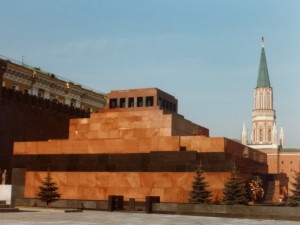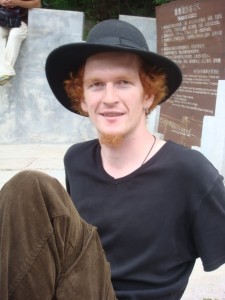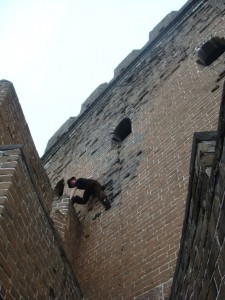I have been thwarted nearly every time I have tried to see dead bodies this summer. I saw one, towards the beginning, at the Changsha Provincial Museum in China, a mummy of some ancient queen. She was lying there as hundreds of tourists were pushing each other – seriously pushing, elbowing too – to get a glimpse of her. Normally Chinese people give me more personal space than they give each other. I call it the sphere of fear (my personal space). But everyone was looking at the mummy, so they didn’t notice I wasn’t Chinese, and I was bumped around like the rest. Eventually I wormed my way in and looked into the gaping maw of this poor ancient dead woman. It’s morbid, by definition, but absolutely fascinating. I was not looking at a vase or a plate or a piece of jewelry but a person who had used all these things, had thought, lived and breathed a long time ago in a galaxy far, far away. We each define art and history in our own way. Call me twisted – I’ll call you crazy for thinking Mark Rothko is worth a second glance (looking at you, Hilary).
When we got to Beijing, then, it was only obvious that we should go and see Mao, who lies mummified in a tomb in Tiananmen Square. Well, it was only obvious to me. Gretchen and Jeanne had no interest in the pilgrimage and made me feel kind of creepy about wanting to. You’d think I’d have grown out of feeling subject to peer pressure. Nope.
Then we got to Moscow. Lenin’s body lies in Red Square, in a completely anachronistic Soviet block (har har) among the fanciful old imperial buildings. You used to have to wait for hours to be able to see him, but the queues have died down in recent years and it only takes about 45 minutes. Again, the rest of my party wasn’t interested, but I talked about it with an American ex-soldier who I met in my hostel. Somehow our wires crossed and he went without me; I figured I’d go the next day but apparently Mr Lenin does not accept visitors on Mondays.
Here in Kiev there’s an impressive collection of mummies of monks underneath the Kievo-Pecherskya Lavra Monastery. It sounds like dead body Mecca: an underground crypt, still lit by candles, with the remains of these venerated holy men an arm’s reach from the corridor (not that I’d want to touch them, I’m not thatcreepy). I visited the monastery with Olivier, part of the cultural attache of the French embassy, who was giving a tour to a visiting French artist named Guillaume Reynard and his friend Florence.
I’d forgotten how bitchy French women can be. I’m not talking about my host, Laure, who is a total angel: how else could you describe someone who agreed to host me in her apartment for free after one email exchange over couchsurfing.org? Florence is cast of a different mold. We spoke in French, which I learned in high school and improved when I lived in France from 2004-2005. Not far into our visit, she turned to Olivier and said ‘She speaks French like a retarded Parisian’ – then turned and gave me a saccharine smile. ‘Her French, it’s not bad,’ chided Olivier, ‘and she can understand everything so far as I can tell.’ Florence didn’t offer an apology.

Just before the gates to the monastery, Florence declared that she was crevée (exhausted) and so we paused for a café before going in. We toured the grounds of the upper monastery, which was stunning in the decaying afternoon light. Much of the cathedral had been reduced to rubble by either the Nazis or the Soviets, noone’s really sure. It’s been rebuilt in fine form, with only one pocked golden dome (furthest left, above) showing the legacy of the tough twentieth century. It was all well and good, I thought, but where were the mummies?
‘Oh, I’m afraid we don’t have time because we stopped for café,’ said Olivier. ‘It closes in fifteen minutes.’
Some sort of divine providence witnessed my pain at missing yet another opportunity to see dead bodies, and so gave me a second chance. My trip to Kazakhstan did not pan out as planned (more on that soon) so I have another three days to revisit the Lavra and improve my unimpressive body count.
Share this:






